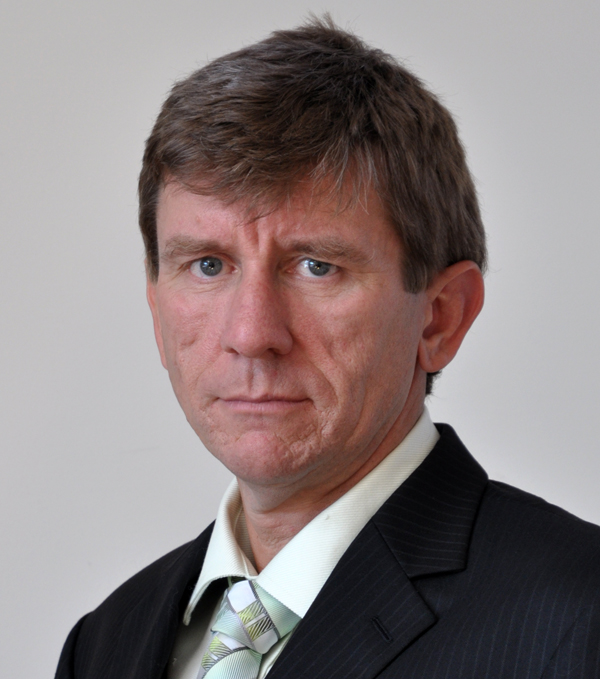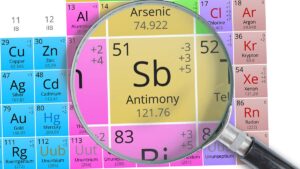Why junior Nexus Mineral’s Kalgoorlie gold discovery has geologists all hot and bothered

Pic: John W Banagan / Stone via Getty Images
Nexus Minerals (ASX:NXM) could well be categorised as a late bloomer.
Once an iron ore explorer with interests in Australia and Tanzania, the company underwent a radical shift in the mining bust.
Entering at the bottom of the market in 2014, geologist and new MD Andy Tudor – whose resume includes roles in the discovery and drill out of major gold orebodies like King of the Hills, Bannockburn and Wafi-Golpu – shifted the company’s focus to gold.
Since then it has been a hard slog. It shifted direction in 2015 by farming into the Pinnacles project, tenements unloved by Saracen Mineral Holdings around its Carosue Dam gold mine near Kalgoorlie.
Nexus took its leap into WA’s Goldfields one step further in 2018 by picking up the Wallbrook gold project from Saracen and additional tenements around it from gold giant Newmont.
It is seven years now since Nexus announced its shift in strategy and it is starting to pay off.
The key driver has been the success of drilling at the Templar and Crusader prospects at Wallbrook which, according to Tudor, closely resemble the multi-million ounce Karari underground mine which is the mainstay of the Carosue Dam operation, now run by ASX-listed gold giant Northern Star (ASX:NST).
After announcing the discovery of high-grade gold mineralisation at Templar in October last year, continued wide, high grade intersections since August have sparked a major run that has seen Nexus’ shares charge from long term levels of around 9c to 50c yesterday, a 455% rise in the past six months.
Nexus is now in a trading halt for a capital raising – reported to be up to $19 million – to restock for a drilling assault on Templar and Crusader.
Stockhead sat down with Andy Tudor this week to find out where it has gone so right for the gold explorer in 2021.
Nexus has one of the strangest 10 year charts I think I’ve ever seen. You were between five and 10 cents for about six or seven years, a little spike when the gold price had its first run in 2016 and then back to five or 10 cents. And then this year, it’s just absolutely gone stratospheric. It’s a pretty strange story isn’t it?
“It’s one of those I guess a lot of junior explorers explore for many years, and don’t ever get that bump and you know, if you don’t have a discovery, it’s just not going to happen.
“We’ve been actively exploring right the way through there and certainly this Wallbrook project … when it first started moving was very much on the back of geologists ringing me post the release and putting out photographs going ‘holy crap, that looks like underground at Karari.’
“That is incredible. And these are guys who worked there over the years, my peers and people around my age, who are all going ‘holy crap’. So then they’ve all jumped on, and started to buy stock.
“Going ‘this just looks incredible, I can’t believe that it looks so much like what Karari does’.
“Unfortunately, we’ve got a lot of drilling to do before we get to be able to announce a resource and see what it looks like.
“At the moment, everywhere we’re hitting, we’re getting the right rocks, we’re getting great grade. We’re getting everything we want. But yeah, it’s a long year ahead.”

Nexus Minerals share price today:
So how have you approached exploration from when you acquired Pinnacles and you came into the business around 2013?
“We had virtually no tenure when I came in. So I came in 2013, the company had $6 million in the bank and an old iron ore project, an old copper project in Tanzania, old copper project on the Northern Territory-WA border.
“But literally it was like we want to get out of all of those, what do we do as a company. That’s what I spent the first six months doing, looking about where I wanted to be.
“And this Wallbrook is an area where I’d sort of identified as being in a perfect world that’s what I want. And so even seven years later, eight years later, and I’ve actually got it and it’s coming up with the goods.
“There’s not many stories like that and I think the great thing about Wallbrook as well is that there’s no old pits.
“All we were drilling, it’s all virgin ground. So you’re starting from scratch, there’s nothing to go by and we’re drilling ballsy holes, a really a long way away from what we know, to sort of go well it’s gotta be big.
“So let’s drill it like we think it’s big, rather than drilling it like we think it’s small because that’s not the case.”
I’m seeing a lot of people say this, like, we’re not going out exploring just so that we could get a 200,000oz deposit and make a quick buck off it. The aim is to find something that’s, you know, 2,3, 4 million ounces plus – is that what you’re aiming for?
“Absolutely. I think whilst we all want that, we all say that.
“It’s very hard as you know, I mean, how many of those discoveries have been made in WA in the last 10 years? A couple at best.
“So it’s hard to do and everyone’s trying, it is just bloody hard to find, it is that ultimate needle in a haystack.
“So you can do all the technical backgrounds you can to get to this point, but then gold is where it is, we’ve then got to start drilling.
“We’ve been fortunate today, wherever we’ve been drilling, we’re hitting it where we want to hit it, it’s looking fantastic everywhere. And it just keeps growing.
“Everywhere we’ve drilled, it’s just completely open. It’s good widths, good grades, good alteration halos and no surprises. It’s even surprised me as a geo doing this a long time that we’ve got 1.6km, almost gunbarrel straight that no matter where we’re drilling, we can drill it and go yep, we expect to hit it at 100m, we hit it at 100m.
“Expected it at 300m, we hit it, the diamond hole we’ve just done, diamond hole 5, the geos said we expect to hit it at 500m. That’s a long way down, we’ve got nothing to go on hundreds of metres around it, we hit it at 506m.
“It’s astoundingly linear. And normally, when you get this linear style of deposit, the grade tends to be to diffuse, so it’s actually disseminated, but to the point where the grade drops, whereas this hasn’t.
“So this you’ve actually got it gun barrel straight, we’re hitting it where we expect to hit it, and it’s holding the grade and improving with depth.
“It’s not many like that people are exploring for at the moment, and hence the interest is that people are starting to get the story and go ‘shit, that’s real up there’.”

How long do you think you’re going to be drilling there before you’re able to announce a resource for the Crusader and Templar projects?
“It’ll be all of next year. We’re doing 30,000 metres right now, which we started six or seven days ago.
“So we’ve got a quarter to complete that, let’s get that out of the road. So we expect to get all of those results by the end of Q1 next year.
“And that will then lead us into our resource program. So this one is what I’d call a tagging program where we need to know where it is.
“We can roughly join the dots, we can work out, do we need to be 20 by 20m? Do we need to be 10 by 5m? What does the drill spacing need to be to give us this indicated resource?
“So then in Q1, we’ll have a pretty good guide, get to the end of Q3 drilling right through the year. And then we’ll start to be able to sort of put some lines around it and really (see) this indicated resource,
“Ultimately to move to engineering studies you really need indicated, there’s little point doing those with an inferred resource. So we’d probably rather drill for another quarter and get the results and the answers we need, then go into full blown studies towards the end of next year, once we start getting a bit of feeling for what it looks like.”
Does the success you’re having out there from the exploration perspective, does it put you in the crosshairs of Northern Star, St Barbara, Anglogold, the big companies around there?
“Look I’d be naive to say it doesn’t. Yes, it does. But I think at the moment, we will see. We’re good explorers, that’s what we do and at the moment I think the larger companies who are not explorers, would be quite happy to say, well, you stick to what you do best for this next 12 months or beyond.
“And we’re certainly planning on running our own race, but we can’t be naive to sort of think that people aren’t watching in a general environment where new ounces are hard to come by and there aren’t many of them.
“We’re in a district where we’ve got a hungry mill already, being Northern Star’s Carosue Dam operation.
“Apollo and the Ramelius potential takeover there … 30km to the south of that, means that you’ve potentially got other big players coming into the district, and they’re going to want to tie up the ounces that are known about for their mills ultimately.
“So yes, we are certainly going to be in that. And I suppose I can only hope that we’re given the opportunity to sort of find out what this really looks like. And then it’s interesting to have those conversations, because you’ve got something that’s pretty significant to come to the table with.”
You spoke about the current predictability of the resource that you’re finding, or the mineralisation that you’re finding, the linearity of it and the comparison between it and Karari. Why is it that no one’s found this before? We know Saracen had this ground that you’re working on.
“It’s history, this big tenement package was owned by Sons of Gwalia back in the 90s. Then they went broke.
“So then it sat in administrators’ hands, Saracen took it out of administration but then they had their hands full with Carosue Dam and getting that up and running, making it a profitable operation, which they’ve obviously done very well.
“But they were spending no money on exploration. And then we sort of came along and said, well, you know, they’ve become shareholders of us in exchange for this tenure, which is, as I said is the one I’ve always wanted, and then we’ve been attacking it now for say the last two years properly.
“You also need that project champion. You come back to the timing, I always believed in it, I’ve driven and driven and driven, we’ve done all the grunt work, it starts to look good.
“It’s not really ‘til now that we’re really able to say, ‘this looks pretty good’.
“Otherwise, you might have drilled shallower holes and walked away. So I think most of these projects that ultimately have a discovery story, will have this project champion.
“Hopefully I can put my name to this one, go ‘it was me who selected the ground, committed to it, believed in it’. And now the results are coming. And we’ll see what that looks like in 12 months’ time.”
You were talking about drilling deeper. Is there a lot of cover where you are or is it just the idea that you looked at the geology and said we need to drill deeper to find the thing? What made you drill deep initially?
“When we were looking at that Karari project to the south, the evolution of that discovery is quite interesting.
“They drilled broad space drilling over the top of these Karari and Whirling Dervish mines in the mid 90s and early 90s and they got one drill hit a couple of metres at 0.6g/t down to 40m.
“So they drilled a deeper RC hole and got sort of 10m at 2g/t, then they brought in a diamond hole. And again, somebody at that time had that commitment, at a pretty low grade, pretty broad spaced, had a crack, put a deeper hole in it.
“We’ve got a lot of the historical data because with Saracen as the JV partners as well in other project parts, they allowed us to have a look at it. And what you see is, as more and more drilling gets put in and the deeper it goes, it develops up nicely.
“Some (deposits) don’t, some get daggy, some get worse, the more you drill, the worse it gets.
“Whereas this was the opposite. And so when we then started looking up here and we were unashamedly looking for another Karari, we knew that around the 100m mark had to be the drill depth, or else we just weren’t going to see it.
“Drill hole 97, which I think will ultimately be what we’ll call our discovery hole, we spent a lot of time with our junior geos looking at all the drill chips in the area and what the alteration product looks like.
“What are we looking for when we drill, they were out there on hole 97 which was meant to be 100m deep.
“It got to 96m, we changed the rods, the rocks were just starting to change colour just a little bit like we were looking for.
“So I said we’ll push a couple more rods down. And really, the rest is history. They drilled to 126m, the rocks were bogged because of the clays and the water, which is a good sign in a way, we end up with 20 metres at 1.7g/t including 4m at 6g/t.
“And now we’re drilling underneath that and we’re getting these great results of depth. So that evolution will ultimately be the story of the discovery.
“Now we know that we were lucky that we got that hole with those last few metres or we potentially would have been right over the top of it and missed it.
“So we’ve actually sat down post each of these drill programs and when we now go regionally exploring, 250m will be the shallowest hole we will drill.
“You’ve got to be well funded to do that, and we are, but there’s little point drilling 100m if you’re potentially sitting on top of multi-million ounces, and you’re gonna spend all that money but you’re not quite going to go deep enough.”

It’s interesting how much of exploration and discovery success is conviction and luck. If you’d stopped the hole when the rods needed to be changed at 96m, then you never would have found that.
“There will be any number of stories, components in it, that will be luck. There has to be.
“(But) you make your own luck. And you know, we thought that by spending months training up our junior geos and going through all the old drill chips and going ‘look you relog everything so you’ve got your eye in when you start this drill program, you know what you’re looking for’.
“You see something that’s interesting you keep going, you know that’s ultimately exploration.
“I’m still passionate today as what I was at day dot. Some people say it’s a mix of art and science.
“You’ve got to be pretty sort of a romantic and be very much a glass half-full kind of person because it’s not for the faint-hearted.”
Related Topics

UNLOCK INSIGHTS
Discover the untold stories of emerging ASX stocks.
Daily news and expert analysis, it's free to subscribe.
By proceeding, you confirm you understand that we handle personal information in accordance with our Privacy Policy.








